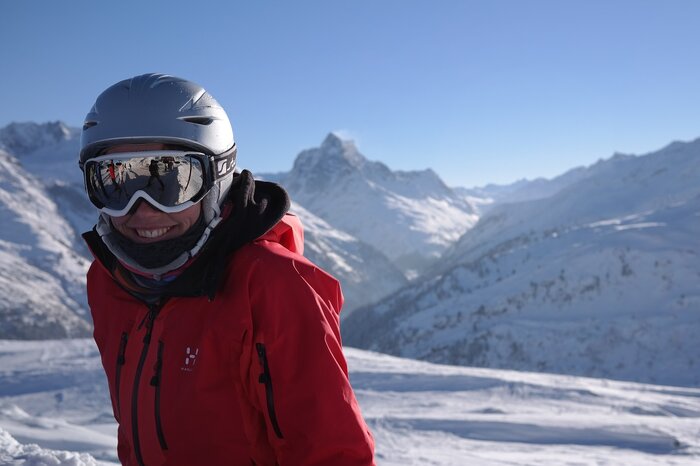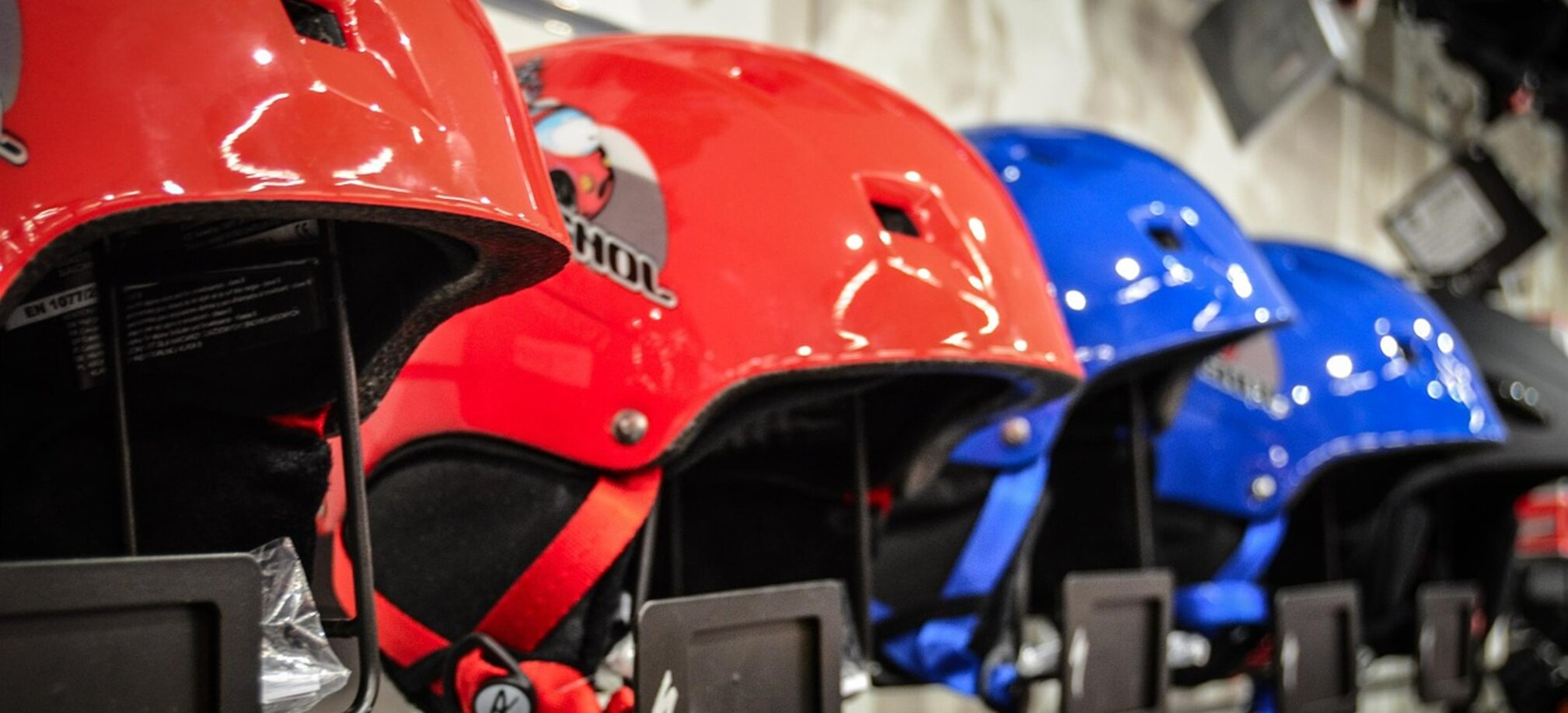In the last years, they have become technically better and also even lighter. Regardless whether a skier or a snowboarder is wearing a helmet or a woolly hat, the difference in weight is so slight that you would not notice it all when skiing or boarding, but if you had an accident then you certainly would. It is not without reason that more and more people are opting to wear a ski helmet voluntarily, as in Austria alone there are about 60,000 ski related injuries a year. The constantly declining accident figures relating to head injuries are proof that a ski or snowboarding helmet is not only an accessory, but is a “must” for safety reasons and is as much a part of skiing as the skis and snowboard are. What difference a good ski helmet makes and which criteria is especially important when buying one will now be explained more clearly.
Safety of the ski helmet through CE-certification
In all European countries, there is a standard for production and function of ski helmets, the CE EN 1077. According to the contents of this standard, the various helmets must meet certain criteria in a type test, such as a drop test or a penetration test. Ski helmets have been split into two categories. Firstly, the class B helmets. These are the half shell helmets with an open temple and ear area, which is more suitable for a slower or a more average speed. Secondly, the class A helmets, which includes half shell helmets with closed ear and temple areas and all full shell helmets. For example, in ski racing, only class A helmets are used. How the helmets are marked to show that they comply with the CE EN 1077 standard may vary from country to country. Every tested helmet should have a sticker or a sewn in patch with the CE- label and in addition the helmet should have an information brochure to hand with it, where the safety features are explained.

The right fitting ski helmet
Ski helmets should be tried on before going out on the slopes. It makes no difference whether it is a very high-quality helmet with a shell made of carbon or glass fibre, which is also equipped with additional safety features such as the MIPS (that has been developed in Sweden), or whether it is a cheaper helmet made with a plastic shell of polyurethane or ABS. The cheaper helmets, have in the meantime, shown that they have an equally high stability level due to the “Inmold” technique.
A simple test to show whether a ski helmet is sitting right, is to place the helmet on your head and to leave the chinstrap open. Then give your head a good shake. The helmet should not wobble or slide about. When doing this, you have to take into consideration that the thick inner padding will give in time and will affect the fit. Therefore, the ski helmet can be a little bit snug at first. This does not however mean that you should have pressure points on your head, as this would mean that the helmet is too small. Moreover, the inner padding should be removable so that you can take it out from time to time to wash it.

Ski helmets for children
Those of you who are looking to buy a helmet for their children, can choose one which has the option to change the inner size of it. The helmet can then be used for many years, despite many growth spurts and at the same time offers continuous safety. Also, when it comes to choosing a helmet for children, it is better to let the child choose the colour and design so that they will want to wear it and it won‘t become boring or even embarrassing. The same applies for children’s ski helmets as for adults, that all the functions, such as the closing of the chin strap, should be easy and simple to handle.
Ski goggles or a ski helmet with a visor?
Those who pick a ski helmet with a visor, do not then need ski goggles, having said that, many skiers and snowboarders prefer goggles, as by the much-used half shell the draft under the visor can sometimes be a bit uncomfortable. The goggles have to fit with the respective fastening of the helmet model, therefore you should pay attention to this when making a purchase. A further point when choosing ski goggles is the annoying and equally dangerous fogging up of the goggles. Ergonomically positioned ventilation slots or built-in mini ventilators in new ski goggles prevent this problem quite well now.
Communication on the slopes
The Smart phone or mobile phone are always at hand in some shape of form or another, then why not use a Bluetooth headset as an intercom? Especially made for skiers, these models can reach up to 800 m and more. Not only a gadget, but also an additional safety aspect.
When should you change your ski helmet?
Independent professionals advise on keeping a ski helmet for no more than 5 years, as the material can tire or technical functional impairments can be responsible for lack of safety. Ski helmets, made out of plastic are more susceptible to low temperatures and UV rays, which can make them brittle and should therefore be changed every three years. Visible rips, deep scratches or some dents are also signs that you should get a new helmet. Here, the principle remains the same as with a car: just as you cannot trust a ripped seatbelt in a vehicle, the same applies to a damaged ski helmet, for example, when you have had a fall, you should not use the helmet anymore. Your own health and also the health of your family should take precedence in such cases.
This article was created with the friendly support of helmexpress.com, the safety experts on the slopes.


